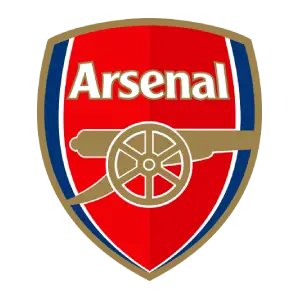
Basics or Definitions of How to Bet on Horses
Familiarize yourself with the essential terms of horse racing betting. A few of the basic terms include win, place, and show. A win bet means betting on a horse to finish first. A place bet involves betting on a horse to finish first or second, while a show bet involves betting on a horse to finish first, second, or third. Understanding what types of bets are offered is basic for knowing how to bet on horse races.
Types of Bets on Horse Racing
It is essential to understand the rules and payout structures for each type of bet before placing your wagers. Also, it’s important to remember that horse racing betting can be unpredictable, and there are no guarantees of winning. However, with a little knowledge and strategy, you can increase your chances of making a profitable bet. Study how to bet on horse races a little to place great wagers.
Superfecta:
Looking to place a Superfecta bet on horse racing but unsure if it’s the right choice? This type of bet offers the chance for a big payout, but it also comes with some risks.
The pros of a superfecta bet include potentially high payouts and the ability to win even if your chosen horses don’t come in first.
However, the cons include the difficulty of correctly predicting the exact order of the top four finishers and the high level of competition among bettors, which can lead to smaller payouts if too many people place the same bet. Understanding the pros and cons of a superfecta bet can help you make an informed decision when it comes to horse racing betting.
Trifecta:
A Trifecta bet in horse racing involves picking the first three finishers of a race in exact order. There are several pros and cons to consider before placing a Trifecta bet.
One of the biggest advantages is the potential for high payouts, as correctly predicting the top three horses in the exact order can lead to significant returns. However, the difficulty of predicting the exact order also means that Trifecta bets can be challenging to win.
Additionally, the cost of placing a Trifecta bet can be high, especially when including multiple horses, which can be a disadvantage for bettors on a budget. Overall, Trifecta bets can be a thrilling way to enjoy horse racing, but it’s essential to weigh the risks and rewards before placing your bets.
Understanding Horse Racing Betting Odds
The second step in reading horse racing bets is understanding the odds. The odds are a representation of the likelihood of a horse winning the race. The odds are typically displayed in one of two ways: decimal or fractional.
Tips – How To Bet on Horse Racing
How To Bet on Horses – Examples
| Placing a winning bet on Horse A with odds of 5/1. If Horse A wins the race, your payout will be five times your wager, plus your original bet. | Placing a place bet on Horse B with odds of 8/1. If Horse B finishes first or second, you’ll receive a portion of the 8/1 odds as your payout. | Placing a show bet on Horse C with odds of 10/1. If Horse C finishes in the top three positions, you’ll receive a smaller portion of the 10/1 odds as your payout. |
|---|
Get into the field and play with more related info
Some of the Biggest Horse Racing Events
- Kentucky Derby:
This is a historic and prestigious horse racing event held annually at Churchill Downs in Louisville, Kentucky. The race offers prize money of $2 million and attracts the best 3-year-olds, jockeys, trainers, and owners in the business to compete for the prize.
- Pegasus World Cup:
This is one of the biggest horse races in the world, with a purse of $16 million. It is a Thoroughbred horse race held annually at Gulfstream Park in Hallandale Beach, Florida. The race is open to horses three years old and up and is run at a distance of 1 1/8 miles on dirt.
- Dubai World Cup:
This is one of the richest horse races in the world, with a purse of $12 million. The race is held annually at the Meydan Racecourse in Dubai, United Arab Emirates. The race is open to horses aged four and up and is run at a distance of 1 1/4 miles on dirt.
- Prix de L’Arc de Triomphe:
This is a prestigious horse race held annually at the Longchamp Racecourse in Paris, France. The race offers prize money of €5 million and is open to horses aged three and up. The race is run at a distance of 1 1/2 miles on turf.
- Breeders’ Cup:
This is one of the biggest horse racing events in North America, with a total purse of $31 million. The Breeders’ Cup is held annually at different race tracks in the United States and offers several races for horses of different ages and genders.
Pros vs Cons
🔷 Pros:
☺Exciting entertainment: Betting on horses adds an extra element of excitement to watching the races.
☺Potential for profit: With knowledge and skill, you may generate a profit from your wagers.
☺Variety of bets: A wide range of bet types cater to different preferences and budgets.
🔶 Cons:
☻Unpredictability: Horse racing is a sport where upsets and surprises are common, making it challenging to consistently pick winners.
☻Risk of loss: As with any form of gambling, there’s a risk of losing money.
☻Time investment: To increase your chances of winning, you must invest time in research and analysis.
Conclusions
Betting on horses can be an exciting and potentially profitable pastime if approached responsibly and with a solid understanding of the basics. By learning the key definitions, following tips and recommendations, and considering the pros and cons, you can make informed decisions when placing your bets. Remember to manage your bankroll, invest time in research, and most importantly, enjoy the thrilling experience of horse racing.






